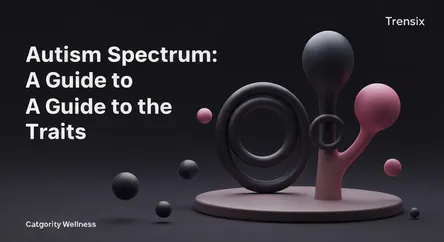Wellness
Autism Spectrum: A Guide to the Traits

An explainer on the core characteristics of Autism Spectrum Disorder (ASD) and why understanding these traits is more important than ever.
What is it?
Autism Spectrum Disorder (ASD) is a neurological and developmental condition that affects how a person communicates, interacts with others, and experiences the world. Its characteristics fall on a wide spectrum and typically appear in early childhood. Core traits include persistent differences in social communication and interaction, such as challenges with interpreting nonverbal cues or initiating reciprocal conversation. Many autistic individuals also have restricted or repetitive behaviors, routines, or intense interests. Another common characteristic is a different way of processing sensory information, which can lead to being over or under-sensitive to sounds, lights, or touch.
Why is it trending?
Conversations about autism are growing due to increased public awareness and broader diagnostic criteria. This has led to a rise in diagnoses, as more people recognize the traits in themselves and others. The cultural conversation is shifting from simple "awareness" to "acceptance" and celebrating neurodiversity—the idea that differences in brain function are natural variations of the human brain. This movement empowers autistic individuals to share their experiences, leading to greater understanding and a push for more inclusive social and work environments.
How does it affect people?
For autistic individuals, the world can present unique challenges. Daily social interactions and sensory environments can be overwhelming, sometimes leading to anxiety or burnout. However, being autistic also comes with unique strengths. Greater understanding from the public and within workplaces, schools, and healthcare can significantly improve quality of life. It helps reduce stigma and ensures autistic people get the support they need to live full lives, fostering a more inclusive society where their contributions are valued.